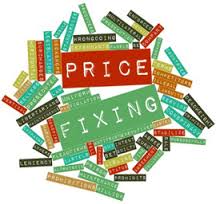Getting Your Arms Around Antitrust Compliance (Part II of II)
 Anti-corruption compliance programs are the rage now – is that a young person’s expression? Antitrust has been a forgotten stepchild, partly because of DOJ’s unwillingness to credit companies that maintain effective compliance programs. That is not a legitimate excuse since every company should be addressing antitrust compliance as part of an overall compliance program.
Anti-corruption compliance programs are the rage now – is that a young person’s expression? Antitrust has been a forgotten stepchild, partly because of DOJ’s unwillingness to credit companies that maintain effective compliance programs. That is not a legitimate excuse since every company should be addressing antitrust compliance as part of an overall compliance program.
Antitrust compliance, however, has been around for many years, and usually fell within the province of the Chief Legal Officer, given the myriad of antitrust issues that are not so clear cut and require legal analysis.
Nonetheless, there is a real and significant area of antitrust compliance that requires attention and robust controls – horizontal activities that are clearly antitrust violations. These include: price-fixing, bid rigging, territorial allocations, customer allocations, group boycott activities, and any other joint horizontal activity. Outside the United States, resale price maintenance can be a problem as well, but for the most part vertical activity does not create the same risks.
To address other antitrust risks where the lines may not be so clear, it is important for the company to make available resources – legal and compliance to respond to questions and potential issues.
An antitrust compliance program should be tailored to the risks of the horizontal activities. If you review the facts of various antitrust criminal enforcement actions, it is important to note the involvement of senior executives and managers in building criminal cases against the company and the individuals. In most cases, sales staff that may be involved in carrying out an illegal price-fixing conspiracy will end up cooperating with the government and testify against their supervisors. In addition to cooperator testimony, the government usually will be able to corroborate joint price movements or bid documents that confirm the illegal agreement between competitors.
A compliance program, at a minimum, has to address these risks, and has to take affirmative steps to monitor and audit sales activities to ensure that there are no illegal agreements among competitors. Anti-competitive risks are exacerbated when the company is selling products that are homogeneous in nature and where the number of competitors is relatively small. As the market becomes more concentrated, the risks increase.
An illegal agreement between competitors requires contact between the competitors – either in-person, on the phone, texting or in email. For this reason, compliance controls have to monitor sales and related activities among competitors to determine if any contacts have occurred, including social events in the industry (e.g. golfing and other activities). A customer that holds joint meetings with its suppliers together in one room is just asking for trouble.
A robust antitrust compliance program should include the typical elements focused on the highest risks involving contacts with competitors. Such contacts should be reported individually, monitored and audited on a regular basis. In addition, legal and compliance should design appropriate monitoring of market activities – pricing movements, changes in customer allocations, or territories. Coupled with a robust monitoring program for contacts with competitors, an antitrust compliance program depends on proactive compliance strategies.
 Beyond this approach, companies have to engage in robust training, even small group training with sales staff and those on the front lines of antitrust risks. Sales staff have to know what to do when contacted by a competitor, or when in an industry meeting with competitors, and discussion topics are raised that may address competition issues.
Beyond this approach, companies have to engage in robust training, even small group training with sales staff and those on the front lines of antitrust risks. Sales staff have to know what to do when contacted by a competitor, or when in an industry meeting with competitors, and discussion topics are raised that may address competition issues.
Like any other compliance risk, senior executives and the board have to commit to promoting a culture of compliance, including antitrust risks. The stakes are very high in this area, and there are plenty of incentives for companies and individuals involved in a cartel to break up the cartel by seeking leniency from the Justice Department’s Antitrust Division.
Given the continuing aggressive antitrust enforcement environment, companies need to redouble their efforts in this area and bring antitrust compliance to the modern age of compliance initiatives. It is about time.
















1 Response
[…] Read Full Article: Getting Your Arms Around Antitrust Compliance (Part II of II) – Corruption, Crime & Compli… […]